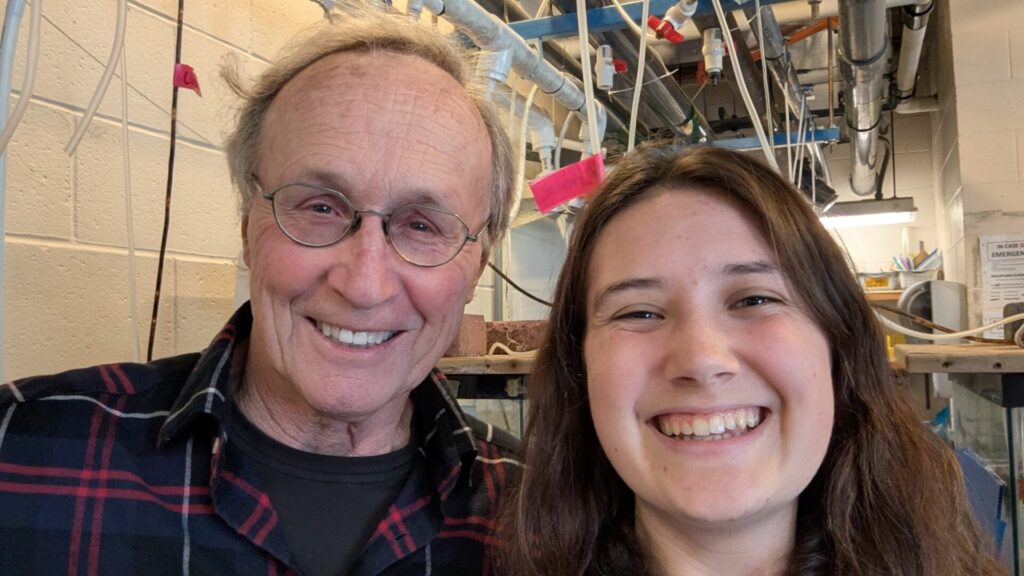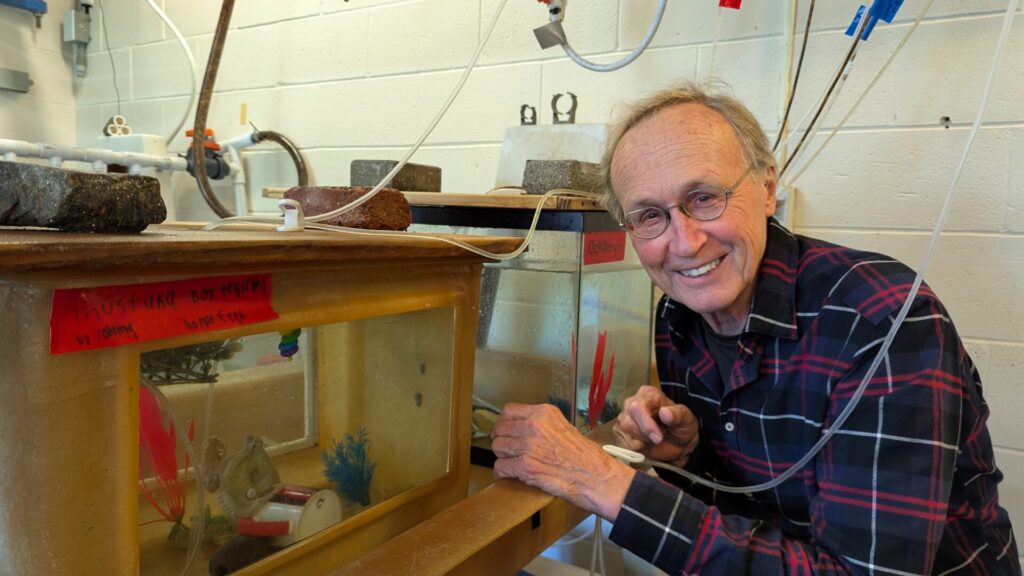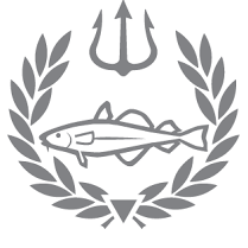During my first week at WHOI with Kim, I had the opportunity to meet for an afternoon with Sea Rover Dr. Roger Hanlon at the Marine Biological Laboratory in Woods Hole.  As someone who loves all things cephalopod, it was amazing to meet Dr. Hanlon and talk about his work studying cephalopod behavior! We talked especially about some of his current research into what cuttlefish camouflage actually looks like to the predators the cuttlefish is trying to fool. I learned that he met one of his research partners at the Boston Sea Rovers Clinic, and Dr. Hanlon walked me through what they’ve been working on in the past few years.
As someone who loves all things cephalopod, it was amazing to meet Dr. Hanlon and talk about his work studying cephalopod behavior! We talked especially about some of his current research into what cuttlefish camouflage actually looks like to the predators the cuttlefish is trying to fool. I learned that he met one of his research partners at the Boston Sea Rovers Clinic, and Dr. Hanlon walked me through what they’ve been working on in the past few years.
Cephalopods like cuttlefish and octopuses are in complete control of how they appear to the outside world, and are able to change their color, pattern, and texture within the blink of an eye to match their surroundings. The question Dr. Hanlon and his team are asking is what the camouflaging animal looks like to other sea creatures, since they all perceive color differently. Some (like us) have three color receptors, while others have two or four, or more! Mantis shrimp famously have twelve color receptors in their eyes, which let them see thousands more colors than we can imagine. To understand this, Dr. Hanlon built a camera with sixteen color receptors, to be able to pick and choose receptors to imitate shark-vision or fish-vision. Dr. Hanlon was really kind and walked me through some of the hardware and software he’s been using to gather that data. It was so amazing to see!
 Dr. Hanlon took me on a brief tour of the MBL labs, and I got to meet some of the cuttlefish, squid, and octopus that live there. They all had fun names, which I loved. One cuttlefish, Inigo Montoya, was very suspicious of the strange humans in his room, and changed his skin to have eyespots on the back of his mantle and a rippling white rectangle in the middle. Dr. Hanlon (the Cuttlefish Whisperer) has been studying cuttlefish for so long that he knows exactly what each display means, and was able to translate it for me!
Dr. Hanlon took me on a brief tour of the MBL labs, and I got to meet some of the cuttlefish, squid, and octopus that live there. They all had fun names, which I loved. One cuttlefish, Inigo Montoya, was very suspicious of the strange humans in his room, and changed his skin to have eyespots on the back of his mantle and a rippling white rectangle in the middle. Dr. Hanlon (the Cuttlefish Whisperer) has been studying cuttlefish for so long that he knows exactly what each display means, and was able to translate it for me!
I had a wonderful time talking with Dr. Hanlon. I was already interested in cephalopods, and in behavioral research, but talking with him made me really excited for my own journey as a diver and scientist. We talked about how we both prefer spending time in the ocean rather than in a lab, and he gave me some great pointers about using photography as a part of research. I’m heading to the Backscatter Digital Shootout as a part of my Internship, so I’ll be keeping his advice in mind as I get more familiar with underwater photography.
I will forever be grateful that Dr. Hanlon took the time to meet with me and show me his research, and for how interested in encouraging my own journey he was! It was a fascinating afternoon with a fascinating man.
– Sofia
